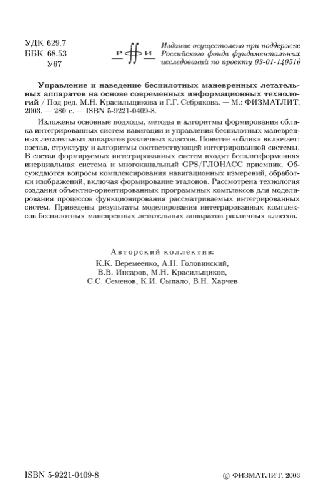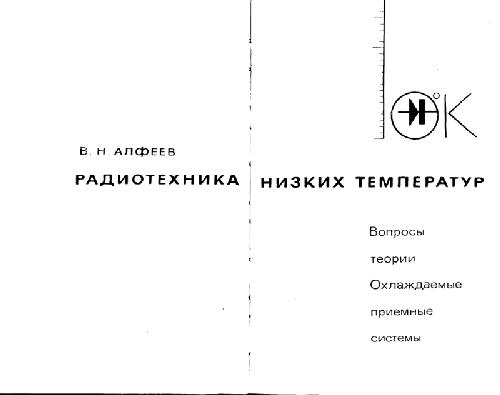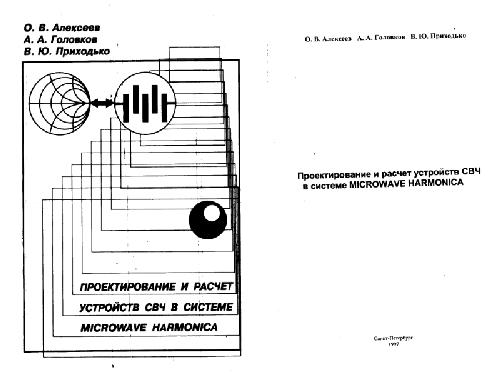G.Q. Zhang, W.D. van Driel, X.J. Fan140204934X, 9781402049347, 9781402049354
Table of contents :
Contents……Page 6
Preface……Page 12
1. Introduction……Page 15
1.1 A Heart of Silicon……Page 17
1.2 In a Little Black Box……Page 21
2. Baseline CMOS……Page 22
2.2 Patterning……Page 25
2.3 Deposition……Page 26
2.4 Planarization……Page 27
2.5 Integration……Page 28
2.6 Interconnect……Page 29
3. Non-CMOS Options……Page 31
3.1 Memory……Page 32
3.3 Passive Integration……Page 33
3.4 High-Voltage/Power……Page 35
3.5 Sensors and Actuators……Page 36
4. Packaging……Page 38
5. Systems……Page 42
6. Conclusions……Page 45
7. References……Page 47
8. Nomenclature……Page 48
1. Introduction……Page 49
2. Reliability Assessment……Page 51
2.2 Biased Moisture Test……Page 52
2.4 Bake and Extended High Temperature Storage Test……Page 53
2.7 Temperature Cycling and Temperature Shock Tests……Page 54
2.8 Power Cycle Testing……Page 55
2.9 Mechanical Testing……Page 56
2.10 Design for Manufacturability, Reliability, and Testability (DfMRT)……Page 57
3.1 Life Distributions……Page 58
3.2 Confidence Level……Page 65
4.1 Arrhenius Relationship……Page 66
4.3 Temperature-Voltage-Relative Humidity Model (Eyring model)……Page 67
4.4 Coffin-Manson Model……Page 68
5.1 General……Page 69
5.2 Examples of Failure Mechanisms……Page 70
6. Conclusions……Page 75
7. References……Page 76
8. Exercises……Page 77
1. Introduction……Page 78
2.1 Conduction……Page 81
2.2 Convection……Page 85
2.3 Radiation……Page 89
2.4 Remarks on Thermal Resistance……Page 93
2.5 Typical Thermal Properties……Page 94
3. Thermal Design of Assemblies……Page 95
4. Thermal Design for a SQFP……Page 100
5. Heatsink Design Choices……Page 102
6. Conclusions/Final Remarks……Page 104
7. References……Page 105
8. Exercises……Page 106
1. Introduction……Page 108
2.1 Analysis of Stress……Page 110
2.2 Analysis of Strain……Page 114
2.3 Thermal Strain and Thermal Stress……Page 116
2.4 Thermoelasticity……Page 117
2.5 Geometric Nonlinearity……Page 122
2.6 Material Nonlinearity……Page 123
2.7 Contact Nonlinearity……Page 133
3.1 Failure of Ductile Materials……Page 135
3.3 Fatigue Failure……Page 137
4.1 Linear Elastic Fracture Mechanics……Page 139
4.2 Elasto-Plastic Fracture Mechanics……Page 145
4.3 Fatigue Crack Propagation……Page 147
4.4 Mixed-Mode Fracture……Page 148
4.5 Crack Closure……Page 151
4.6 Singularity of Angular Corner of a Homogeneous Material……Page 153
4.7 Interface Fracture Mechanics……Page 154
5.1 Introduction……Page 160
5.2 Treatment of Nonlinearity in Finite Element Analysis……Page 161
5.3 Finite Element Implementation in Fracture Mechanics……Page 171
5.4 Advanced Techniques in Finite Element Analysis……Page 175
6. References……Page 178
7. Exercises……Page 179
1. Introduction……Page 181
2.1 IC Backend Processes……Page 183
2.2 Packaging Processes……Page 186
2.3 Reliability Testing for IC Packages……Page 189
3. Thermo-Mechanics of IC Backend Processes……Page 191
3.1 IC Material Characterization……Page 192
3.2 Wafer Warpage as a Function of Temperature……Page 195
3.3 Nano-Indentation……Page 197
3.4 IC Interface Toughness Characterization……Page 200
3.5 Other IC Material Characterization Techniques……Page 202
3.7 Finite Element Modelling for Backend Processes……Page 203
4. Thermo-Mechanics of Packaging Processes……Page 218
4.1 Packaging Material Characterization……Page 219
4.2 Silicon Anisotropy……Page 220
4.3 Characterization of Thermosetting Resins……Page 222
4.4 Advanced Experimental Techniques for Packaging Stresses and Deformations……Page 226
4.5 Package Interface Toughness Characterization……Page 228
4.6 Typical Packaging Material Properties……Page 233
4.7 Finite Element Modelling for Packaging……Page 234
5. Thermo-Mechanics of Coupled IC Backend and Packaging Processes……Page 257
5.1 Effect of IC Metal Design on Passivation Crack and Pattern Shift Occurrence……Page 258
5.2 Effect of Package Structure on IC-Compound Interfacial Delamination……Page 265
6.1 Reliability Predictions of Thermo-Mechanical Integrity of the Damascene Process……Page 271
6.2 Simulation-based Material Selection for a TBGA Package……Page 275
7. References……Page 283
8. Exercises……Page 290
6. Characterization and Modelling of Moisture Behaviour……Page 292
1. Introduction……Page 293
2.1 Diffusion in Multi-Material System……Page 296
2.2 Application to PBGA Package……Page 300
2.3 Moisture Desorption……Page 302
3.1 Diffusivity Measurement……Page 303
3.2 Saturated Moisture Concentration……Page 307
4.1 Micromechanics-based Vapour Pressure Model……Page 309
4.2 Vapour Pressure as External Loading in Delaminated Areas……Page 316
4.3 Vapour Pressure-Induced Expansion……Page 318
4.4 Whole-Field Vapour Pressure Modelling……Page 319
4.6 Underfill Selection for Flip Chip BGA Package for Moisture Performance for Moisture Performance……Page 320
5.1 Hygroscopic Swelling Characterization……Page 322
5.2 Hygroscopic Swelling Modelling for FCBGA Package……Page 338
6. Single Void Instability Behaviour Subjected to Vapour Pressure and Thermal Stress……Page 341
6.1 Void Behaviour at Bulk……Page 342
6.2 Void Behaviour at Interface……Page 347
7.1 Mechanics of Interfacial Delamination……Page 349
7.2 Interfacial Fracture Toughness……Page 352
7.3 Interface Modelling using Cell Element……Page 353
8.1 Integrated Stress Study for QFN Package……Page 356
8.2 BGA Moulding Compound Selection with Optimal Resistance to Moisture Induced Failures……Page 372
9. References……Page 381
10. Exercises……Page 385
1. Introduction……Page 387
1.1 Low Cycle Fatigue Loading……Page 389
1.2 Thermally Induced Solder Joint Reliability……Page 391
2. Analytical-Empirical Prognosis of the Reliability……Page 395
3. Thermo-Mechanical Characteristics of Soft Solders……Page 399
3.1 Eutectic Sn-Pb-(Ag) Solder……Page 406
3.2 Tin-Based Lead Free Solders……Page 409
3.3 Discussion on the Solder Creep Characteristics……Page 415
3.4 Primary Creep……Page 418
4. Data Evaluation and Life-time Estimation……Page 420
5.1 Comparing Different Creep Laws for a Ceramic Capacitor and a PBGA on FR-4 Boards……Page 428
5.2 Comparison of Predicted and Test Results for Surface Mount Quartz Components……Page 438
5.3 Parametric Study on Chip Size Packages……Page 448
5.4 Flip Chip on Board Assemblies……Page 459
6. References……Page 472
7. Exercises……Page 476
1. Introduction……Page 479
2.1 Strategy and Methodology……Page 483
2.2 Procedures……Page 487
3.1 Design of Experiments (DOE)……Page 490
3.2 Response Surface Models (RSM)……Page 492
3.3 Design Optimisation……Page 499
3.4 Reliability and Robustness Analysis……Page 517
4.1 Analytical Examples……Page 522
4.2 Industrial Application Cases……Page 527
5. Conclusions……Page 541
6. References……Page 542
7. Exercises……Page 544
1. Introduction……Page 547
2. Mechanical Related Characteristics of Microelectronics……Page 548
3.1 Design Inputs……Page 552
3.2 Failure Inputs……Page 553
4. Tests and Experiments……Page 555
5.1 Material Behaviour……Page 556
5.2 Interface Strengths……Page 557
6.1 Introduction……Page 559
6.2 Hierarchy of Methods for Mechanical Modelling……Page 561
6.3 Handshaking between Approaches……Page 566
6.4 Summary and Outlook……Page 568
7. Multi-Physics Modelling……Page 570
9. Conclusions……Page 571
10. References……Page 572







Reviews
There are no reviews yet.